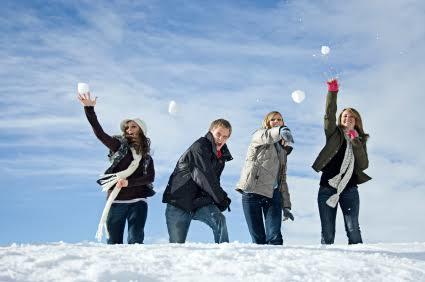Why you can have a snow fight?
Classical Mechanics
Level
1
 In the liquid or solid form, water cannot be packed to form a stable ball, why can we do this with snow?
In the liquid or solid form, water cannot be packed to form a stable ball, why can we do this with snow?
Trace amounts of other elements in snow allow it to stick together
Snow melts slightly when squeezed, then freezes when released
The branches of the snowflakes lock together
The polar bonds in water allow the snowball to stick together
This section requires Javascript.
You are seeing this because something didn't load right. We suggest you, (a) try
refreshing the page, (b) enabling javascript if it is disabled on your browser and,
finally, (c)
loading the
non-javascript version of this page
. We're sorry about the hassle.
As the problem states, when water is too cold (solid), or too warm (liquid) it cannot form stable packed shapes. It is obvious that liquid water has no capacity to hold a particular shape. In the cold limit, snow will generally be found as snowflakes which we can take to be flat discs, and when they're perfectly solid, snowflakes don't have much of a tendency to interact and stick to one another. To "stick", snowflakes need to form a connective junction, called an ice bridge. Much like a weld between two pieces of iron, an ice bridge is formed by temporarily melting then re-freezing water at the interface of two snowflakes.
Such bridges are simple to form in a snowball due to a convenient property of water, that it is more dense in the liquid phase than the solid phase. By packing a snowball, a significant pressure is applied inward from all sides, and the snowball tends to compress. Under this compressive force, some of the snow tends to melt, enabling greater compaction. Upon relaxing the compressive force, the snowball is free to expand, which allows the pockets of melted snow to refreeze. It it this freezing that forms the connective welds that attach neighboring snowflakes, enabling the large scale, stable structure of the snowball.